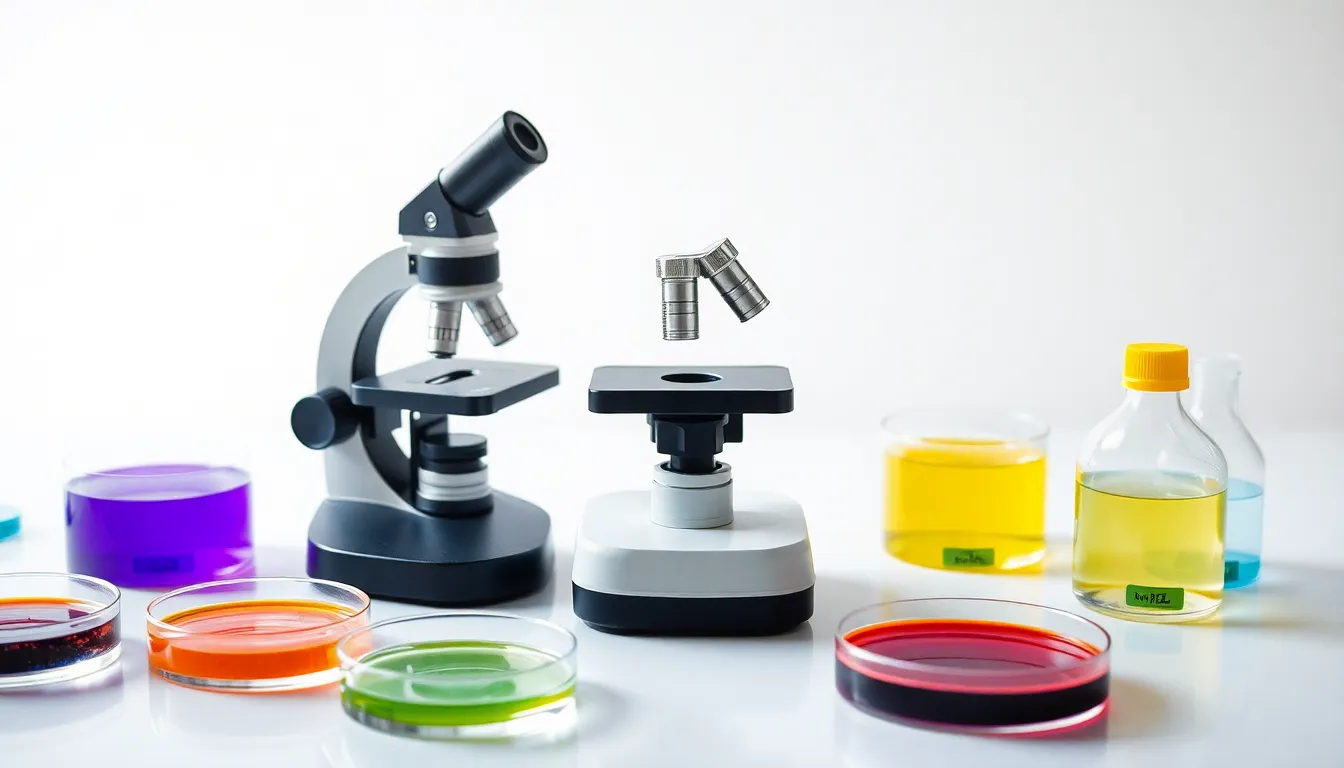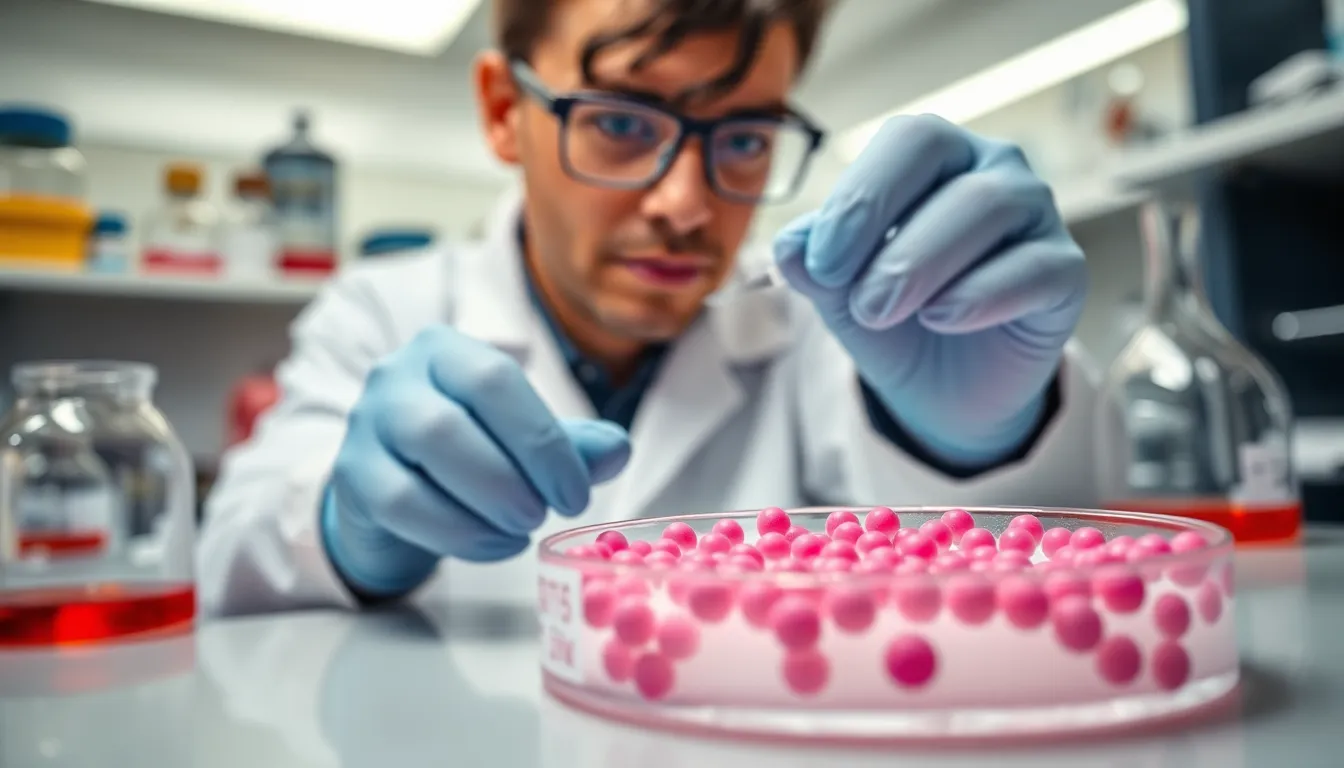E. coli—it’s the bacteria that’s both infamous and fascinating. While most people associate it with foodborne illnesses and unpleasant bathroom experiences, understanding its classification can unlock a treasure trove of microbiological knowledge. Is E. coli gram positive or negative? Spoiler alert: it’s the latter, but let’s dive into why that matters more than just for trivia night.
Table of Contents
ToggleUnderstanding E. Coli
E. coli is a prominent bacterium known for its role in various foodborne illnesses. Its classification as gram-negative is crucial for understanding its structure and behavior.
Characteristics of E. Coli
E. coli exhibits a rod shape and typically ranges from 1 to 3 micrometers in length. This bacteria thrives in the intestines of warm-blooded organisms, contributing to digestive processes. It possesses a cell wall composed of a thin layer of peptidoglycan, surrounded by an outer membrane rich in lipopolysaccharides. E. coli can be motile through flagella or non-motile in some strains. Under laboratory conditions, it ferments lactose, producing gas within 48 hours, showcasing its metabolic versatility.
Common Strains of E. Coli
Several strains of E. coli exist, each with different levels of pathogenicity. Escherichia coli O157:H7 is notorious for causing severe foodborne illness outbreaks, often linked to undercooked beef and contaminated produce. Other pathogenic strains include Enterotoxigenic E. coli (ETEC), commonly associated with traveler’s diarrhea, and Enteropathogenic E. coli (EPEC), which affects infants, primarily in developing countries. Non-pathogenic strains, such as commensal E. coli, play essential roles in gut health and are harmless to humans.
Gram Staining Process

Gram staining is a technique for classifying bacteria based on their cell wall properties. This process distinguishes between gram-positive and gram-negative bacteria, playing a crucial role in microbiology.
What is Gram Staining?
Gram staining involves a series of steps that uses crystal violet dye, iodine solution, alcohol decolorizer, and saffranin stain. Initially, the crystal violet dye stains all bacteria. Next, iodine acts as a mordant, forming a complex with the dye. Alcohol then distinguishes bacteria based on cell wall characteristics. Gram-positive bacteria retain the crystal violet dye, appearing purple, while gram-negative bacteria don’t, showing a pink hue after the application of saffranin.
Importance of Gram Classification
Gram classification helps identify bacterial species and guides treatment options. Understanding whether a bacterium is gram-positive or gram-negative informs the choice of antibiotics. Many gram-negative bacteria, like E. coli, are resistant to certain antibiotics, making accurate classification critical for effective treatment. Moreover, this classification is essential in diagnosing infections, as it allows healthcare providers to quickly determine the most appropriate therapeutic strategy.
E. Coli Classification
E. coli, classified as gram-negative, possesses specific characteristics that differentiate it from gram-positive bacteria. This classification stems from its thin peptidoglycan layer and outer membrane rich in lipopolysaccharides.
Is E. Coli Gram Positive or Negative?
E. coli is indeed gram-negative. During the gram staining process, it takes up the counterstain saffranin, resulting in a pink appearance. The distinctive outer membrane found in gram-negative bacteria plays a critical role in its resistance to certain antibiotics. This structural feature contributes to the difficulties faced when treating infections caused by E. coli.
Implications of E. Coli Being Gram Negative
Being gram-negative has significant implications for treatment. Many antibiotics struggle to penetrate the outer membrane, limiting their effectiveness. This characteristic often leads to an increased likelihood of antibiotic resistance. Profound understanding of this classification can guide healthcare providers in selecting appropriate therapeutic strategies. For instance, practitioners may opt for specific antibiotic classes that target gram-negative bacteria effectively, ensuring a more successful treatment approach.
Clinical Significance of E. Coli
E. coli plays a significant role in human health, particularly concerning infections and antibiotic resistance. This bacterium can cause a range of illnesses, from mild gastrointestinal disturbances to severe diseases.
E. Coli Infections
Infections caused by E. coli can result from consuming contaminated food or water. Symptoms may include diarrhea, abdominal pain, and vomiting, with severity varying by strain. The pathogenic strain E. coli O157:H7 often leads to severe illness characterized by hemorrhagic colitis. Populations vulnerable to these infections include young children, the elderly, and individuals with weakened immune systems. Various strains like Enterotoxigenic E. coli and Enteropathogenic E. coli contribute to distinct health risks in travelers and infants.
Antibiotic Resistance Concerns
Healthcare providers face growing concerns over antibiotic resistance in E. coli. Many strains now exhibit resistance to common antibiotics, complicating treatment efforts. The outer membrane characteristic of gram-negative bacteria also adds to this challenge by blocking effective drugs. Increased usage of antibiotics enhances the selection pressure for resistant strains. Studies show that improper antibiotic use causes resistance to spread rapidly. Understanding the implications of antibiotic resistance with E. coli is crucial for public health strategies and effective treatment outcomes.
Understanding E. coli as a gram-negative bacterium is essential for recognizing its implications in healthcare and antibiotic treatment. Its unique cell wall structure not only influences its behavior in the body but also plays a significant role in its resistance to many antibiotics. This resistance presents challenges for treating infections caused by pathogenic strains, particularly in vulnerable populations.
Awareness of E. coli’s classification helps healthcare providers make informed decisions regarding diagnosis and treatment options. As antibiotic resistance continues to rise, addressing the complexities of E. coli infections becomes increasingly critical for effective public health strategies. Recognizing these factors can lead to better management of E. coli-related illnesses and improved health outcomes.




